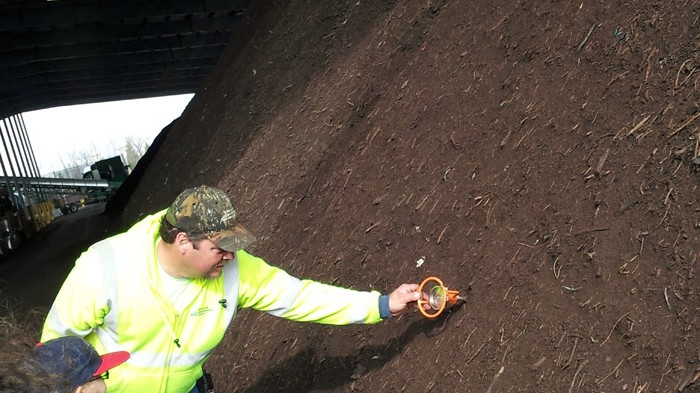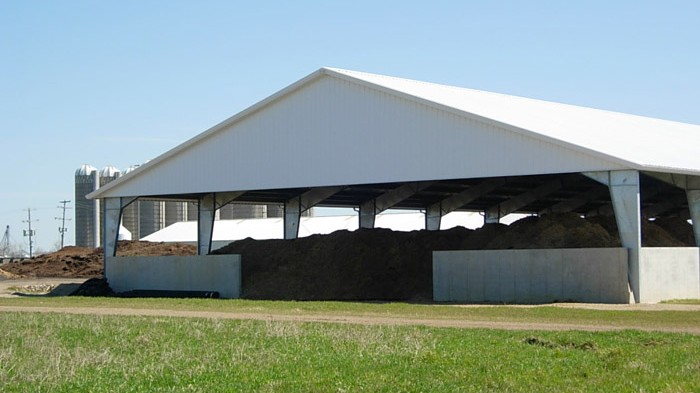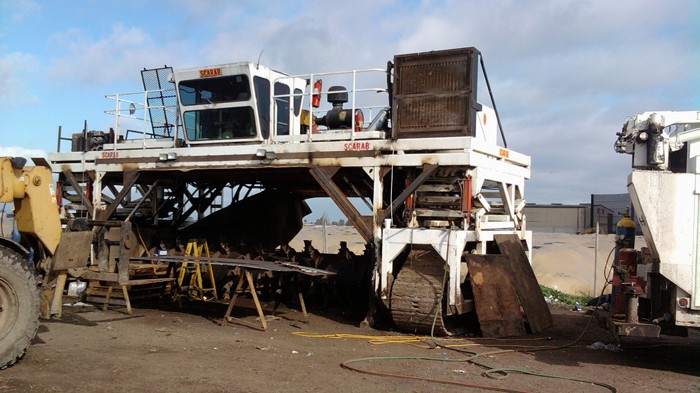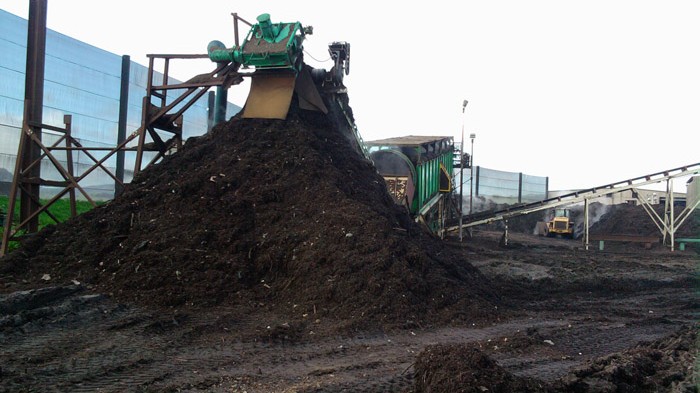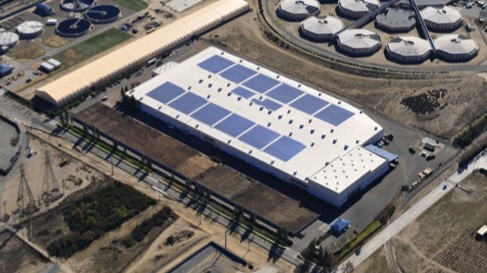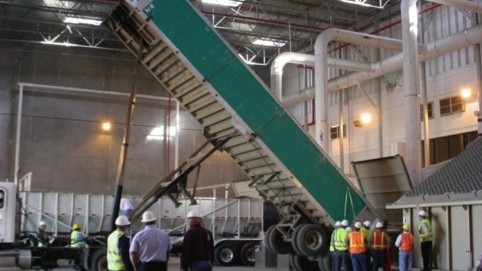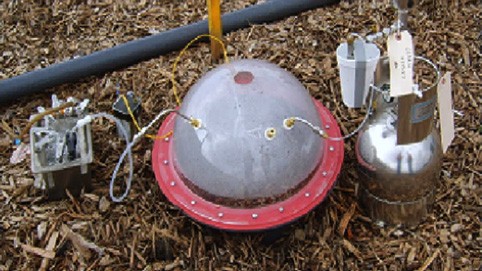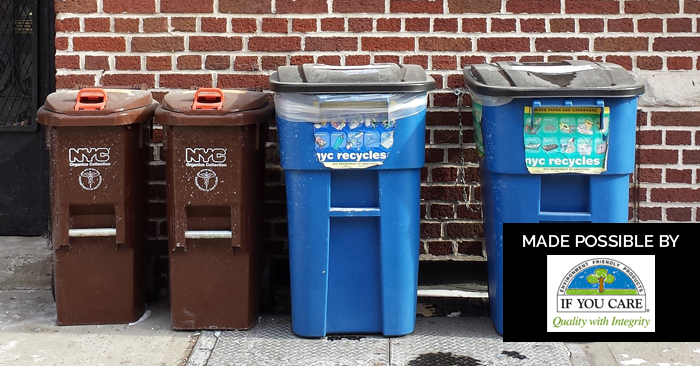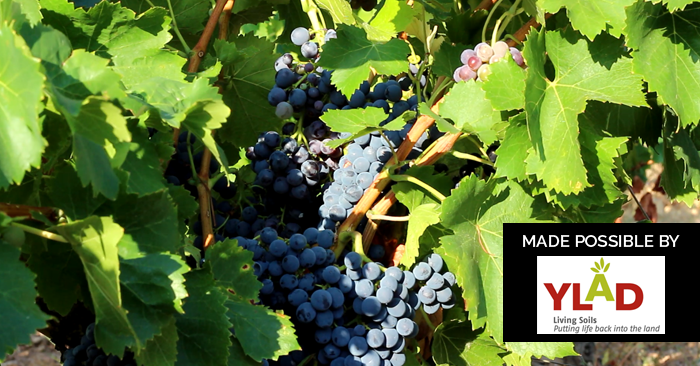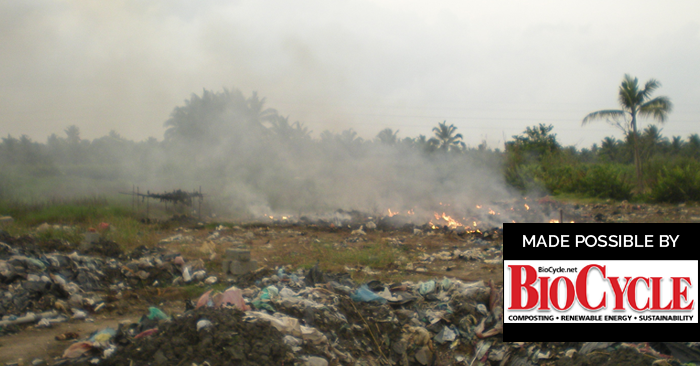An Approach To Expanding Commercial Composting Operations
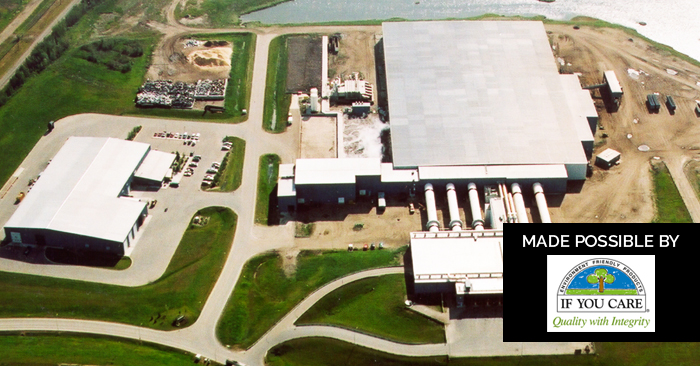
This episode corresponds to Lesson 5 and Lesson 6 of our online course.
In this episode we’re in Los Angeles talking to the project manager of the Inland Empire Regional Composting Authority Jeff Ziegenbein about how best to expand your composting facility without compromising quality or risking your business. We discuss with him the reasons why composters may need to expand, the technological advances that can help with processing and odour control, how to use a phased approach to growth in order to secure financing and to maintain production quality, tips on dealing with regulations, and much more.
Thanks to If You Care for making this episode possible.
If You Care Certified Compostable Bags are made from potato starch from starch potatoes, blended with a fully compostable polymer, and are polyethylene and plasticizer free. Their potatoes are grown for starch only unlike corn which is grown for food. Their potatoes require forty percent less land than corn and no irrigation. For more, visit their website.
Photo by wasteman2009.
TRANSCRIPT
New Mandate And What It Means For Composters
Q: In terms of closing the loop, it is often preferable to have a larger number of small-scale composting facilities to ensure that organic materials do not have to travel far from their source in order to be treated. However, today there is still a great need for larger facilities, and composting facilities often face scenarios that require them to scale up their operations. Jeff, you mentioned before we started that there are changes taking place in California that will see more composting facilities needing to expand. Can you elaborate on this and tell us more?
JZ: California is going through a huge change. We’re mandating the organics away from landfills, and it’s a very ambitious goal. CalRecycle, which is our Integrated Waste Management board here in the state, has announced that they have this new paradigm, saying they want to move out of the landfill. They want to disincentivize and do whatever they have to do to pull those organics out of the landfill for higher and better use.
But the way this new assembly bill reads, some of the activities that are currently considered recycling will no longer be considered recycling – specifically Alternative Daily Cover for landfills. We’ve got a whole bunch of green waste and other organics going into landfills that are not being counted as disposal, but rather as recycling because it’s being used as Alternative Daily Cover. Under this new assembly bill, this no longer will count. We’re essentially doubling the amount of recycling in a very, very short period of time. So the impact to the organics world in California is going to be very profound. Most of us in California, and others I talk to in the US, view that what happens in California tends to trickle outward across the country and sometimes far beyond, so everybody’s watching how rolls out very closely.
I say that because when composters are facing different scenarios that may encourage them to change or expand their facilities, this is a big driver. Right now, California composts almost six million tons of organics, so we in the organics industry are expecting that to double to about twelve million tons in about five years. So that’s going to require more facilities, more markets, and infrastructure. I think one of the big things that we all need to be aware of is that it’s going to require diversity, so we’re going to have to be creative. We’re going to have to open our minds up a little and understand that it’s not just one technology, one scenario or one application that’s going to require a lot of different varieties. So, small backyard operations, community operations as well as very large regional facilities are all going to have to be constructed and expanded to satisfy this new mandate.
Q: So one of the major reasons a composting site might need to expand is an increase in feedstocks. But how about regulations? There are very stringent regulations in California that make it difficult for smaller composting sites to get off the ground…
JZ: That’s true. California is a big state, but I one of the things that’s common across the state is the challenge of siting facilities. We have a population and a state that doesn’t usually like facilities to be very close to where their residents are, but the further you move away from where your populations are, the more transportation costs you have. So we always try to build as close as we can to where the materials are generated, but in our state we have a lot of stringent regulations around water, air and nuisance that do require higher technology than I see in other places in the country.
For example, the facility that I’m operating here in Southern California – the Inland Empire Regional Composting Facility – this facility actually cost ninety million dollars to construct. And that is a very large price tag for any composting facility; it may be one of the most expensive ones in the world. But the reason why it’s so much money is because it’s right in Los Angeles. It’s in an urban area, and it’s in an area that is very heavily regulated by an air district, because LA is not in compliance with the clean air act and is also heavily regulated with water and with lots of things.
So in order for us to be compatible to build a facility like this in this type of an area, it required a lot of engineering and a lot of infrastructure. The good news is that we did get it built, we did get it permitted and we’re able to operated it at a very competitive cost, but the only way we’re able to make all that work is by a heck of a lot of volume. In the case of this facility, we’re operating over two hundred thousand tons every single year, and that’s the reason why we can make this work. It’s not always that easy: if you build a small or a medium sized facility with this type of VOC and odour control (VOC’s are volatile organic compounds, which are regulated in this district), and you don’t have a lot of volume to spread those costs over, you can price yourself right out of being a possibility. So we see that challenge over and over again in the state of California, and I’m sure that’s a common problem across the world.
Q: So if regulations are very strict, it may force composters to invest in building covers or in more expensive technologies, which in turn would require them to scale their operations.
JZ: Yes, and the good news that in two major areas in California have air rules that require the removal of VOCs, and when you remove VOCs you also have to remove most of the odours in the air streams that are remitted for composting facilities. So just by surviving in these air districts, we’ve learned a lot as an industry; what does work, and what works on a big scale, so we try to share that information and teach others that these technologies do exist – they’re fairly predictable in how they operate; I’m really talking about biofilters. We do have a pretty good understanding about how these work and we can use them in lots of ways; in ways that are very expensive, but also in some ways that aren’t quite so expensive. So we view that there’s some hope that we can site more facilities in California and be compatible with the air rules and the neighbours.
TECHNOLOGICAL Advances In The Composting Industry
Q: Let’s talk about technologies. A big factor here is that within the last 20 years we have seen an increase in the amount and type of feedstocks being accepted into composting facilities (biosolids, paper sludge, food scraps…). Due to the increased complexity in processing the material and controlling odours, it’s spurred on the need for more sophisticated technology to handle all this. Jeff, what rare the technologies that are worth investing in today to handle odour, and so on?
JZ: For odour control is often a biofilter, and a biofilter is essentially in most cases a wet pile of wood, and the beauty of that is it’s a wet pile of wood and most of us can figure out how to operate those. It’s not that complicated, you don’t have to have a full-time engineer with a bunch of fancy instruments, it really is just a pile of wood, and we have to maintain it for moisture and make sure the air is moving through it appropriately, and size the pieces of wood appropriately and things like that. But biofilters work, and the good news is that we can copy this and teach people how to do this, allowing them to build these things fairly inexpensively.
So for odour control, and for compliance with these air districts, a biofilter is a very good tool, and we’re getting more and more confidence with using them. More recently, there’s been a couple of variations to biofilteration, including some covers where they have permeable tarps that you can put over piles that have a bunch of surface area in the tarp so the water molecules will collect in the surface area and the air passes through and transformed similarly to how it would be in a biofilter. Those seem to work pretty good as well.
The Association of Compost Producers, a non-profit trade organisation that represents most of the composting companies in the state, developed an alternative to all those I’ve just talked about, where a finished compost layer is placed over a compost pile, and then air is blown up through the compost pile. And as the air passes through the finished compost layer, that actually works as a biofilter. So that’s even cheaper yet than securing new wood and having to size it and moisten it and so on. And so that was done in the San Joaquin air district that has very stringent air regulations.
So the Association of Compost Producers representatives and some others put together a pilot project with a grant, and demonstrated and measured the air omissions from these piles using the lowest cost technology, and it actually worked very well and got about ninety eight percent removal. So that may be something that really helps facilities deal with odour removal and VOC control with even a lower cost method. That same technology is being tested in the South Coast air quality district and other districts in California to verify it and see if it can be repeated in another air district. And if it can be, it may be adopted as a best management practice for these districts.
Q: Is there anything else on the market right now that you see as promising or worth investing in?
JZ: The most exciting things that I have seen is some of the technologies in the tarps that can actually process the odours and VOC control. I’ve seen quite a few of these work and I like the simplicity of just throwing a tarp over a compost pile and having these automated systems control the air flow and temperature and so on. So some of these kits for making a compost system are pretty interesting, and as we get more and more experienced, I can see them becoming an easy way for someone to start up a small or medium sized facility. It’s just a tarp and a probe that has an oxygen sensor and a thermocouple, and it goes to a small motherboard that controls the fan. I like the thought of that, I think things like that have a lot of promise.
Q: Your facility is a completely covered facility, is that right?
JZ: Yes, the Inland Empire Regional Composting Facility that I manage is a converted warehouse. It’s actually an old Ikea warehouse that’s almost five hundred thousand square feet, so it’s a very large warehouse that has conveyors and wheel loaders and things like that operating inside of it. So all of the emissions from the compost piles are trapped within that building and then exhausted out through the biofilters. The amount of control of emissions is pretty extraordinary, actually.
Q: Because of this, would you say that covering your facility or using in-vessel composting would be the best way to go when dealing with such stringent regulations or being close to residential buildings?
JZ: I think it depends on where. We’ve looked at possibly working with other people on building additional facilities, and almost every time we halfway serious about it, we end up envisioning a covered, fully enclosed facility, due to the reasons I mentioned before. The only way we really feel comfortable in an urban area on a very large scale was to do the complete enclosure. I think if you’re in a different area and not so close to Los Angeles for example, then that’s when you can get into some of the hybrid technologies that I mentioned before.
Challenges When Expanding Operations
Q: I’d like to focus on the process of expanding a facility. What are the key issues or challenges to take into account when planning your expansion?
JZ: I think the big challenges, and not in any particular order, would be environmental regulations – and that has some cost impacts – markets, and definitely technology to make sure it’s clean enough to be marketed and processed, and probably transportation.
Those seem to keep coming up over and over again when I talk to folks about expanding or building new facilities. But markets are always a major concern. In some areas less than other areas, of course, but in Southern California which has a tremendously robust composting infrastructure – we’re currently composting over three million tons down here – we need to expand markets.
Q: Market creation seems to come up again and again, and it’s something we talk about quite often. It is complex and it’s difficult for the composter to handle it by themselves of course, but what would you recommend to composters, then, as a strategy for expanding the markets?
JZ: Building markets is a long term process, and it needs to have the mainstream of people realise that it is important not to have naked soil and to just throw water at naked soil. We do that all the time in this state, and I’m sure across the world. So, getting that message across is very, very important. And in California at least, with the Association of Compost Producers, we’re working on service announcements, we’re working with our water distributers, creating model ordinances requiring soil preparation before irrigation permits go down…just educating people that it’s wrong not to treat your soil. You shouldn’t just throw a bunch of water on sand and waste this drinking water.
In order to market, it takes this broad approach. And then on top of that it takes a local approach. You need to work with your customers and tell them why they need more, how to expand their market, what their messages need to be. We work with schools in trying to get the message to the children that you need to put compost down. So it’s all of those things.
Using A Phased Approach
Q: Another big issue for expanding a facility is in securing funding and putting in place a workable strategy that will give confidence to lenders and also yourself when expanding. How would you advise composters to start planning their expansion with these issues in mind?
JZ: Yes, for example, to fund a new composting facility in California and get a bank to come up with a bunch of money so you can build your facility, they need some assurance that it’s actually going to work. So if you just have this vision of this huge facility, a lot of times folks will try to go get put or pay contracts, and build these models and things, but banks sometimes aren’t satisfied with that, and that can make the cost of money pretty prohibitive.
One of the better models is if you can design a facility so you have this expandability to it and you can do a phased approach, then you have a lot better shot of success. You can have, say, a receiving structure that’ll take it in a little or a lot of material, but that’s usually a fairly inexpensive part of your process, and then you can feed these different operational trains for one through four phases. And the facilities I’ve seen use that kind of process – that’s the smartest way to go if you can do it. In other words, if you can get funding for phase one at twenty-five thousand tons and you can make the business case work, then you can prove that out. And by the time you get to phase two your economies of scale are so much better, and it really gives you an opportunity to expand a facility.
But then you’re not starting right at this maximum best case – there’s just a lot more risk for failure when you do it that way. If we’re talking about borrowing, you need to demonstrate in a very professional way what’s working and why your expansion is going to assure that you are going to pay money back. So when you’re doing performa on your business models and having enough comfort level in there and enough conservatism in there that the numbers are real and you can verify them, that’s the key. It’s very tough to design a facility and have it actually work exactly how you estimated it would, so I would be as conservative as you can stand, and then if you have a bit of a track record and your numbers are real, I think you can get the funding that you need. It can be done, I see examples of it all the time, but you do have to put together a real performa, and it has to have some sort of backing to it.
Q: Yes, and in the US at the moment, financing is a very tricky thing to get these days what with state grants and loans having been decreased over the last ten to fifteen years. Is it easier for a composting site that has been running for a while to secure capital in order to expand?
JZ: Well I think it might be easier. I think if you go to a lender and you have this track record, and then this proposed expansion, I think you have a little bit more confidence from the lenders. And there is also some grants currently, with this new paradigm as CalRecycle likes to call it, there is some funding for facility expansion. So there is some money available that folks are competing for to expand their facilities, and that may give lenders a little bit more confidence too. I think there’s a little bit more money than there was, say, five years ago. I don’t think it’s as healthy as it was ten years ago, but it’s certainly better than it was recently.
How To Tackle REGULATIONS
Q: Let’s move onto regulations. It’s always going to be a long process to go through when figuring out what regulations apply and how to comply with them, and we can see even from our discussion today that they have shaped the composting industry and where we go with it. What advice would you give to composters on this front, and how can we best get on the right side of the regulators?
JZ: : I know this is a regional answer, but again we’re sort of a case study: in California I think it’s very important to be involved with a lot of these changing issues. Specifically the Association of Compost Producers which is this trade organisation, it has a seat at the table. We have a lobbyist sitting in Sacramento, and we are the state chapter for the United States Composting Council, so we are working with Caltrans and CalRecycle and assembly people, and the water board and the air board – all these different variables that are impeding the growth and expansion of the compost marketplace. It’s very important to get involved, and it doesn’t cost a lot of money, but you have to maintain involvement and get to know what’s going on.
For a long time the compost industry has been a fragmented group of companies who saw each of their own projects as an individual island, but because these regulations have become so dynamic and impacting, all these groups have joined together for this common cause to make sure everybody understands that compost is the highest and best use for this material, that we are a real industry with a real group of professionals, that we are involved and are funding staff to make sure we have a seat at the table. I think that’s probably the most important thing folks can do. Just get involved!
I think that raises the bar, raises the standard, it makes common standards, it keeps everything as professional as possible, and that’s really one of the biggest keys to moving forward successfully
Q: So your key advice is for people to just get involved, and then maybe we can influence how regulations are being created to support composting better.
JZ: Absolutely.
Managing ODOURS and QUALITY CONTROL
Q: In terms of managing the facility during expansion, it can be quite a lot of work to maintain your quality control and odour control as it gets bigger and bigger. What steps can we take to expand without losing quality or risking odour problems?
JZ: Yeah, that’s tricky. It is definitely tricky, and it’s not usually a linear change. If you have some sort of control system and you do a forty percent increase, you can’t just increase your control system forty percent and call it good. It’s more complicated than that. You have to be conservative when you’re expanding a facility for the reasons you just mentioned. The cost is so high; if you have a successful operation and you go to do a forty or fifty percent increase and you kill your whole project – that isn’t anything that you want to have happen. So I think you nailed it; I think it does require a lot of planning and research and control measures to make sure that when you do make these changes you’re not jeopardizing your entire project.
And we’ve seen that happen, it’s very unfortunate. You know, you think “this works, so if I do more it’ll work better”, and sometimes that just is not the case. So you have to build in a lot of safeguards when you start to expand operations.
Q: And what would these safeguards look like?
JZ: Well, there are a lot of professionals – not that you necessarily have to go and hire a full engineering firm – but there are some very competent professionals that can help measure and quantify some of those changes. For example, what’s going into a biofilter? What is the cubic feet per minute and concentration and the effectiveness of your biofilter? And if you want to expand to some X percentage greater, what would your empty bed retention time and biofilter need to be, and therefore your square feet? There are a lot of folks who can really help build in some of these control measures and then give you a safety factor.
That’s really the take on what I’m trying to say. I think you really need to be conservative when you start designing expansions. For example, if you wanted to expand by fifty percent you might phase that in. Start with your odour control device, and then do incremental increases in your throughput – that way you’re not destroying your whole project. So if you doubled your odour control device, but then only increased your throughput by half, then potentially you have this bit of a cushion before you jeopardize your project.
Q: So you need to go slow and steady.
JZ: I think it’s pretty important. Projects do get killed in California; it happens. If the neighbours are against the project, the regulators start to fall out of favour with it, and the local enforcement agencies – it’ll kill a project. There’s a lot at stake; it’s expensive to build these things in California, you do not want to get it shut down.
Q: And this applies to the rest of the world too.
JZ: Of course.
TECHNOLOGY – Simple Is Best
Q: In terms of picking out the right technology for your expansion, there is often a tendency to source the highest functioning technology available, because it’s cutting edge and might be easier to sell when looking for grants, but that’s not necessarily the best option…
JZ: Well I think you’re right, and we’ve seen examples of trying to fully automate composting processes, and we end up modifying that somehow and doing as much labour or more trying to live with whatever savings we thought we were going to get from this automation.
Personally, I take whatever is the cheapest and the dumbest first and work up from there, and ask why you can’t do this or can’t do that. Really low technology or inexpensive technology with the finished compost biofilters thing that ACP did is very good. It’s not going to work everywhere, but that’s one of the ones you’d look at early on. You know, “can I do this with a windrow? Oh I can’t because f the air rules. Okay, well can I do this compost blanket technology? Oh, I can’t because there’s a retirement community three miles away. Well okay, can I use a cover? Oh, I can’t because of – whatever”.
So you have to start ruling some of these out for whatever reason, and then ultimately maybe you get to where you have a fully enclosed composting facility, because that’s really the only thing that’ll be compatible in the region that you’re looking to build one. So again you need to start simple and cheap, and then work backwards.
Final Words Of Advice
Q: Is there one piece of advice you could give all composters out there who are looking to expand no matter where they’re situated?
JZ: I would certainly recommend looking at other facilities. We have a lot of good examples around the world of facilities that work, and go look at them. It does not cost that much; most facility operators are happy to show off what they’ve got that works. So take a look at it. Find out why it works and but lunch or something, and spend enough time that you can get the real challenges out of them. You know, ask the questions: what are your biggest challenges? Why would you do that again? And those type of things.
Learning from other’s experiences is probably one of the most valuable tools that we as an industry can use. And through associations like the United States Composting Council etc – we have these meetings where all these guys get together and talk about their projects. I think that this is a very important step.
Q: Do you have any final words before we go?
JZ: I’ll just say that as our industry matures, that organisations like the United States Composting Council and others like them around the world, and Association of Compost Producers in California – and Compostory.org – things like this are really important, and I think that the industry needs to stay informed and stay involved, and share what they know, and listen to what others know. And that’s how we mature as an industry and grow.
